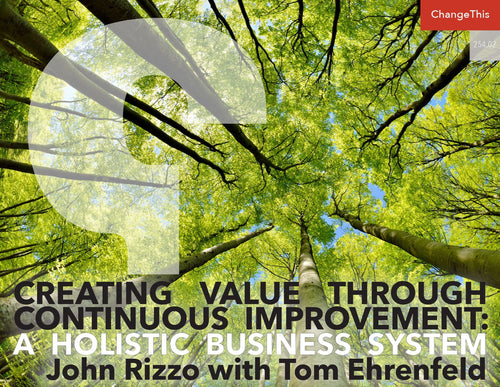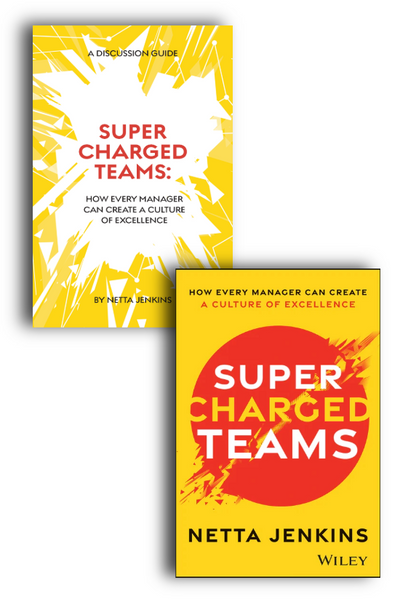The Four Lessons of Relationship Rituals
Despite what the cultural cliches around us suggest—most of them mass-produced by commercial and corporate entities—rituals between romantic partners often have less to do with champagne, red roses, and violins and more to do with deeply personal gestures that catalyze and sustain an intimate and exclusive human connection.
If rituals can affect our outcomes as individuals, how do they feature in relationships and romance? Can these sets of physical actions that no other couple has ever performed before animate our most important relationships with something more—more happiness, more connection, more pleasure?
LESSON 1: Rituals Wake Up Our Experience of Commitment
Most of us think of weddings, marriage, and moving in together as the quintessential commitment rituals, but we perform smaller acts of commitment from the moment we first consider sharing a life with another person. Just as we are assessing—either overtly or in more subtle ways—our own capacity to commit to one person, we are also gathering evidence of our partner’s level of commitment to us through this partner’s repeated and often most ordinary actions: Does the partner pick us up at the airport or make a point of applying sunscreen to the middle of our back? Does the partner bring us our favorite doughnut—the one with chocolate sprinkles—when out for their own morning treat?
There are also many more unconventional ways to carve out a meaningful life with another person. The iconic French intellectuals and existentialists Simone de Beauvoir and Jean-Paul Sartre created an utterly unique ritual, and only for them.
After discovering each other in 1929 through mutual friends at the Sorbonne in Paris, the two became romantic partners, close readers of each other’s work, and trusted confidants, engaged in a conversation that only ended with Sartre’s death in 1980. It was impossible for one to think a thought without running it past the other, or at least imagining what the other might say.
Yet, when it came to conventional marriage—a bourgeois contract of monogamy and, for Beauvoir, subservience—they both recoiled.
Instead, they gathered in the Tuileries, a garden and palace alongside the Seine in Paris, and conducted their own private ceremony on a stone bench. They committed to signing a contract. They would be together for two years and then reassess whether they wanted to continue. Instead of “till death do us part,” two of France’s most vociferous advocates for existential freedom could only authentically commit to “till two years do us part.”
When the two years passed by in a haze of caffeine, cigarettes, and copious handwritten pages—letters, plays, philosophical treatises, novels—they continued with their philosophical pact committing to each other as their primary and essential relationship and allowing for any contingent relationships that emerged along the way.
Historians and biographers have created an entire branch of scholarship devoted to determining who was really running the show in this unconventional relationship.
To judge from afar and wonder at the strangeness of it, however, is to lose sight of two people coming together and creating their own commitment ritual from scratch. The amount of time and effort—not to mention emotion—they invested in its performance year after year gives us further insight into their lifelong bond. Their commitment ritual was their labor of (decidedly unconventional) love.
Our survey results revealed similar labors of love, albeit in more quotidian and conventional forms. The words people used to describe their rituals communicated reliability and repetition—phrases such as “every Friday night”; “together every Sunday at nine a.m.”; “every day”; “every morning.”
Whether you are performing a ritual that explodes conventions or a simpler set of actions that demonstrate your care, these rituals accrue meaning in a way that a signed legal wedding document or a mortgage never can or will. You might invest in rituals such as Chinese food in bed every Friday night, going for a polar bear plunge on New Year’s Day, leaving the shower running and hot for your partner every morning, or giving each other an album from your favorite jazz instrumentalists for every single birthday; it matters much less what you do and much more that both of you do it regularly together.
LESSON 2: Relationship Rituals Are Exclusive
Whether it is a snuggle every morning, a cup of coffee made just so, or Olivia Wilde’s “special salad dressing”—originally whipped up for her ex, Jason Sudeikis, and then audaciously served to new beau, Harry Styles—relationship rituals are exclusive. People are often furious when they discover that a ritual they thought was unique to their relationship is being practiced in a new relationship. “She has a special salad dressing she makes for us,” Sudeikis supposedly told his children’s nanny in a fit of emotion, “and she’s taken it to have it with him now.”
Exclusivity in relationships is often considered nonnegotiable, but why is it that exclusivity in ritual is required as well?
Research confirms that we are sensitive to relationship rituals we perceive as unique. In a study by Lalin Anik and Ryan Hauser examining gift-giving rituals, people indicated which of two mugs they would prefer to receive from their partner—Style A or Style B—and were told that Style A “is made from more durable ceramic and got slightly better reviews online.”
In general, and not surprisingly, people preferred Style A, except when they learned that their partner had already given Style A as a gift to someone else. In that case, they gave up quality and chose the mug that signaled relationship exclusivity: Style B.
This means that we want our partners to be committed not just to a relationship ritual, but our relationship ritual. Why is that? For the same reason we want our partners to be committed not just to a relationship but to our relationship. Rituals are one way that we make our mark on the world, together; our joint ritual signature.
LESSON 3: Rituals—Not Routines—Bring the Magic
Consider a tale of two weekends: In the first household, a married couple named Tim and Seth are setting out to do what they do every Saturday morning. Tim gets the bags for the farmers market down from the closet while Seth makes their tea and lets it steep. Tim feeds the dog and takes him out while Seth quickly unloads the dishwasher. At nine o’clock, they each take their favorite travel mugs filled with tea—milk for Tim and sugar for Seth— and set out to get food for dinner from the market down the street.
Both of them look forward all week to this ritual. Saturday morning—walking to the market, looking at the fresh fruits and vegetables, talking to the butcher, discussing their dinner plans—is their favorite part of the week.
In another household in another part of the country, Dave and Angie wake up and set out to complete their Saturday tasks. Dave gets the grocery bags ready while Angie makes them both fresh coffee. Dave quickly runs the garbage out and Angie feeds the cats.
Then it’s nine o’clock and time to set out. They grab the bags and their coffee mugs filled to the brim for the ride. They both sigh before taking a big gulp—they need it.
Trudging to the grocery store every Saturday morning is a dreary chore they both dislike. From the mindless repetition of the grocery list, to waiting in the long lines to checkout, to the arduous loading and unloading of all the food from the bags. When the chore is finally finished, they both feel relieved and part ways to enjoy what’s left of the day.
The difference between these two households has nothing to do with their actions: they both plan to spend time shopping for food for the week. For the first couple, it is the highlight of the week, and for the second, it is an errand that is annoying and even dreaded.
The difference is that the first couple feels the action is symbolic of their love, while the second feels it is merely routine, a habit not a ritual.
Human beings are regulated by an emotional thermostat; regardless of circumstances, we tend to revert to our happiness homeostasis. After the initial highs of relational milestones—new love, a wedding or commitment ceremony, buying a home—our happiness stabilizes and we no longer feel so ecstatic.
This phenomenon, referred to as hedonic adaptation, gives us some insight into why even the most compatible couples start to experience the relationship blues. Psychologists Kennon Sheldon and Sonja Lyubomirsky argue that, due to this hedonic adaptation, we simply stop noticing all the wonderful aspects of what was once fresh and captivating.
Here, intentionally distinguishing between routine and ritual can play a meaningful role. When we perform routines, we are getting things done: the what. If the house is dirty, then we need to clean it. Shared rituals have a deeper meaning attached to them: the how.
Taking out the trash, eating food, or drinking coffee couldn’t be more mundane, but how we engage in these activities together, the specific actions we take as a couple with a shared reality, can transform the mundane into symbols of our lasting love.
We set out to measure the difference by canvassing some four hundred people not only about their shared rituals, but also about their shared routines. We defined a routine as “an activity that you do together every so often, is repeated over time, and is something that you do because it is a habit or a task that needs to be completed.” Our results for rituals were possibly simply because couples who spend more time together were happier, regardless of what they were doing in that time.
But when we asked about routines as well, we found that it wasn’t that simple. The majority of our respondents reported having a relationship ritual (74 percent), and even more reported a relationship routine (81 percent). Relationship rituals were more likely to be things such as date nights, whereas routines centered on activities such as chores.
Just as we saw in our tale of two Saturdays, the rituals reported by some couples could easily have been routines for other couples—such as going to the grocery store or making coffee. What mattered was how the couples experienced the activities. When they saw these actions as symbolic of their love, the actions took on new importance, leading the ritual-prone couples to report greater levels of happiness and satisfaction.
We often seek out something unique and extraordinary when we’re looking for romantic fulfillment, but it can actually be the ordinary daily rituals—and not the extraordinary ones— that matter in the long run.
Ximena Garcia-Rada and Tami Kim conducted research showing that many couples believe that extraordinary experiences are better for the relationship than ordinary ones— they might plan a memorable wedding, for example, but have no daily, smaller-but-still- special rituals.
For people in long-distance relationships, this means that when they do get a weekend together, they try to spend every minute doing something fascinating and unforgettable (think skydiving and impossible-to-get theater seats).
But this focus solely on extraordinary adventures can come at the cost of the smaller activities that accrue meaning over time and give shape to our everyday lives. Even if they don’t sound like the stuff of an epic romance, these experiences—such as shopping together and planning what you’ll cook—can become ritualized, scaffolding and animating the “cinematic universe” that couples create together.
You don’t necessarily need the excitement of helicopter rides or trips to the other side of the world. The most ordinary of rituals—a walk in the park or a glass of wine on the stoop— repeated weekly have the potential to enchant. The key to creating magic is to share the same spell book.
LESSON 4: You Say Ritual, I Say Routine
Just as one person’s animating toothbrushing-and-showering ritual can be another’s automated routine, not all couples agree that they even have a ritual—and that’s cause for concern. Our final, most heartbreaking, insight about relationship rituals came when we realized that consensus was a critical factor.
In the final stage of our research, we asked each of the two people in more than one hundred romantic couples—people who were married, living together, and had been together for an average of twenty-eight years—to complete the same survey on their own, without talking to each other. This allowed us to compare each person’s report to the partner’s. We found that couples tended to agree with each other. If one member of a couple reported a ritual, the other tended to as well.
But nearly 20 percent of couples diverged: one said that they had a ritual in common, and the other one said they did not. Date nights were a case in point. If one partner classified a date night as a ritual, the majority of the time the other partner would agree. But more than one-third of people whose partner claimed the couple had a date night ritual classified that same date night as a routine. That’s a sad date to keep going on, again and again—one person seeing it as a ritual, symbolic of love, while the other is seeing it as habitual, mindlessly punching the clock.
We also asked these same hundred-plus romantic couples how satisfied they were with their relationship. Couples who agreed that they had a ritual were the happiest. But the couples who disagreed experienced no benefits at all from their one-sided ritual. Poignantly, they were no happier than the couples who agreed that their relationship had no rituals at all.
The pomp and pageantry of love and commitment—whether that of a traditional wedding or a conventionally romantic night out with red roses and candles—looms large in our collective imagination. Yet our research revealed that the most meaningful rituals for couples are often idiosyncratic to them.
These rituals make no sense to the outside eye but enable us to create a unique shared reality with just one other person. They are by and for a country comprising only two residents—a cowritten ritual signature.
Adapted from THE RITUAL EFFECT: From Habit to Ritual, Harness the Surprising Power of Everyday Actions, copyright © 2024 by Michael Norton, PhD. Reprinted by permission from Scribner, an imprint of Simon & Schuster, LLC. All rights reserved. No part of this excerpt may be reproduced or reprinted without permission in writing from the publisher.











































